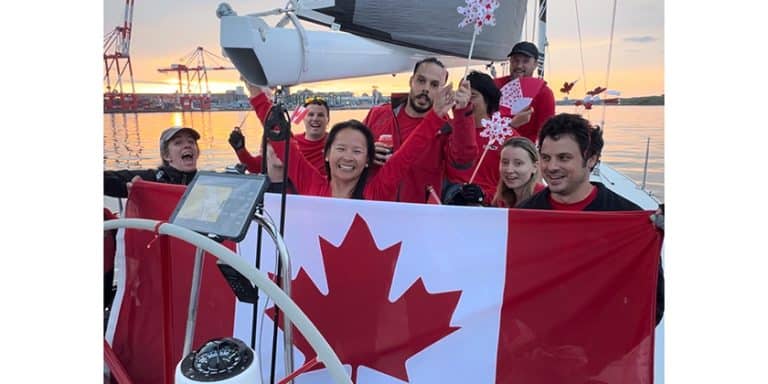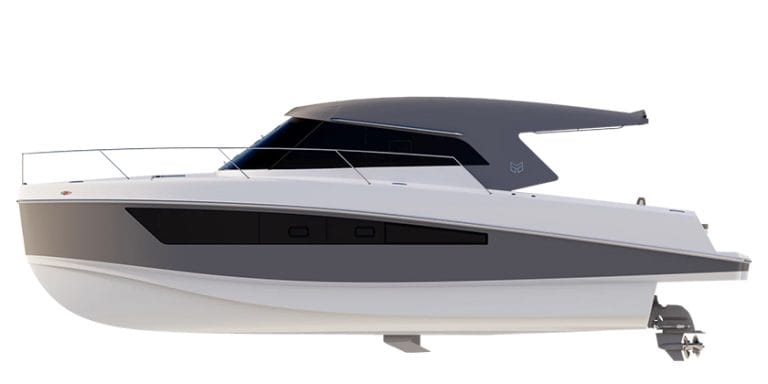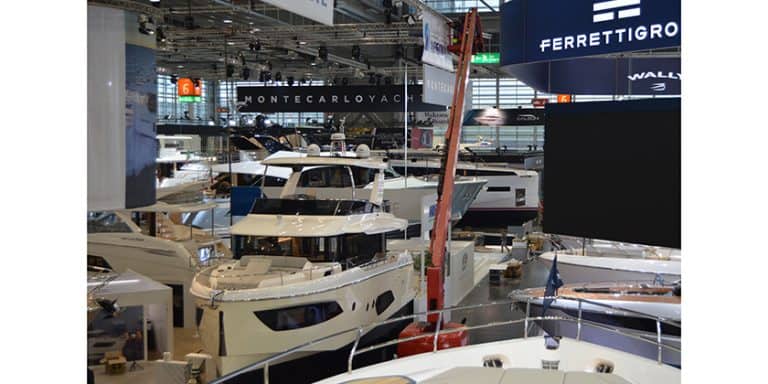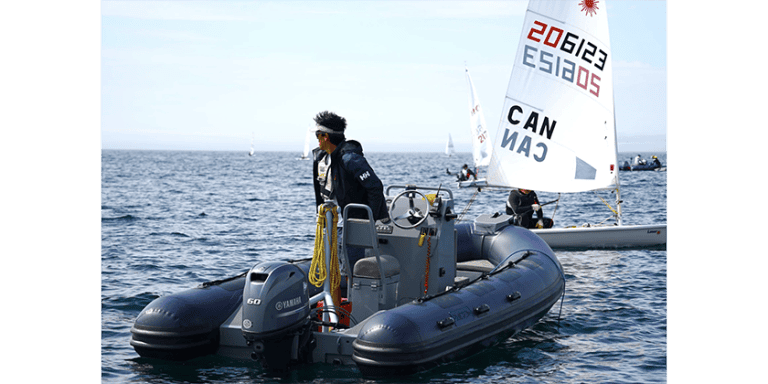750 miles. No motor. All the way to Alaska.

Aug 22, 2019
By: Christophe Credico, Team Ripple
Team Ripple ringing the finisher bell in Ketchikan after a hair-raising final night in Dixon Entrance. Christophe (left), Chris (center), Marj (right).
Photo credit: Race to Alaska by Northwest Maritime Center
Last Fall, I joined a team preparing for the 2019 Race to Alaska: The physical endurance, saltwater know-how, and bulldog tenacity to navigate the 750 cold water miles from Port Townsend, Washington, to Ketchikan, Alaska. First prize: $10,000; second prize: a set of steak knives. There are no other prizes.
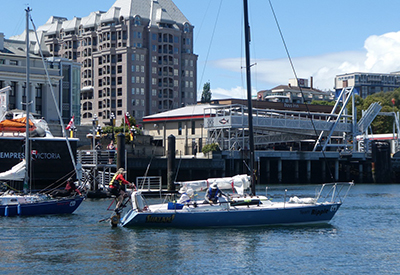 Pedalling out of Victoria Harbour after the Stage 2 start, on our way To the Bitter End.
Pedalling out of Victoria Harbour after the Stage 2 start, on our way To the Bitter End.
Photo Credit: Vic Jarvin
This is no ordinary race. Open to any boat without a motor, the race starts with The Proving Ground, a 40-mile qualifying leg across the Salish Sea from Port Townsend, Washington to Victoria, BC. Boats that finish within 36 hours are eligible to compete in Stage 2: To the Bitter End, which starts a few days later in Victoria and ends 710 miles north in Ketchikan, Alaska.
The only designated waypoints are Seymour Narrows, an iconic pinch point on the Campbell River where tidal currents can reach up to 15 knots; and Bella Bella, a small fishing community 80 miles north of Vancouver Island amongst a set of (slightly) inland islands. Beyond these, it’s up to each team to pick their route up the Inside Passage and beyond.
The event attracts everything from high performance multihull sailboats to tricked out monohulls to smaller, sometimes ramshackle vessels including dories, kayaks, and even stand up paddle boards, all vying for the $10,000 first prize – although only a handful of boats are really in it to win it. For the rest, it’s all about the adventure and challenge of getting to the finish line in one piece.
Motors are not allowed on board, so every boat needs a means of pushing forward using human propulsion when sailing is not practical (or not permitted, as is the case in Victoria Harbour.) This results in all kinds of human propulsion engineering wizardry and innovation, often involving pedal power to drive an underwater propeller.
Through pedal power came my connection to this race via one of my Ottawa cycling buddies. His sister, Marjory Stewart, was putting together a team for the 2019 event, looking for like-minded adventurers – ideally with cycling and sailing experience – with whom she could plan, compete, and ‘suffer cheerfully’ on her R2AK campaign. With my competitive sailing background, cycling fanaticism, general sense of adventure, and vouched-for personality compatibility from Marj’s brother, this was an intriguing proposition.
However, this would require my being away from home (and work) for up to four weeks, managing cold, wild and potentially treacherous ocean conditions along the Pacific Coastline, and spending a prolonged period of time in confined quarters under stressful conditions with people I had never met in person.
With approvals from (most importantly) my wife, Tonya and from work, I give my commitment in November to participate. With Marj in Milwaukee, Chris Watt (Marj’s cousin, our third teammate), in Victoria, and me in Ottawa, we spend the next six months remotely working through the many preparation challenges including finding and retrofitting a suitable boat.
 Light wind and nasty currents working our way up Campbell River.
Light wind and nasty currents working our way up Campbell River.
Photo credit: Christophe Credico
The three of us meet for the first time on May 30th in Port Angeles, Washington, pedal out of the harbour into the fog, and set sail aboard our Santa Cruz 27 with a bike mounted to its transom powering an underwater propeller – on our way to Port Townsend, where we would spend a few days preparing and soaking in the R2AK festivities before the June 3rd, 5:00 am Proving Ground start.
Of the 46 Proving Ground starters, we are among the 35 who qualifiy to continue. And of the 25 who successfully make it To the Bitter End at Ketchikan, Alaska, we finish 20th, 11 days after our Victoria start.
We overcome sleep deprivation, thick foggy nights, commercial shipping traffic, kelp beds, a surprising number of floating logs, huge tides and currents, navigational hazards along rocky and exposed coastlines, isolation and remoteness, sometimes nasty and unpredictable weather including a middle of the night ocean gale in Dixon Entrance, and endless damp resulting in never-drying clothing. We log about 55 hours on the pedals, propelling the boat north at roughly 2.5 knots when the wind disappears. When the fog lifts, we are treated to eye-popping vistas and beautiful scenery, including snow-peaked mountains, open ocean vastness, whales, dolphins, and eagles.
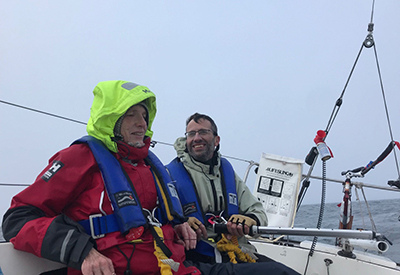 Wind, fog, rain, and smiles in Gordon Channel.
Wind, fog, rain, and smiles in Gordon Channel.
Photo credit: Chris Watt
Every day we persevere through everything thrown at us while maintaining our camaraderie and team spirit. When we pedal into the Ketchikan harbour on June 17th and ring the bell to mark our successful finish in the cold Alaskan drizzle, our collective sense of relief, accomplishment, and exhaustion is palpable.
We missed out on the $10,000 and the steak knives, but R2AK was everything I had hoped and more. While I’m proud of our accomplishment, my wife Tonya is the real hero for her selfless support of my saltwater ambitions. To her I express my deepest gratitude and affection.
The Race to Alaska is not for everyone. But finding ways to step out of your comfort zone, challenge yourself in unpredictable situations, and immerse yourself in the beauty of nature can be therapeutic and even life changing. I highly recommend it!
For more information, check out the R2AK website and our Team Ripple Facebook page.

